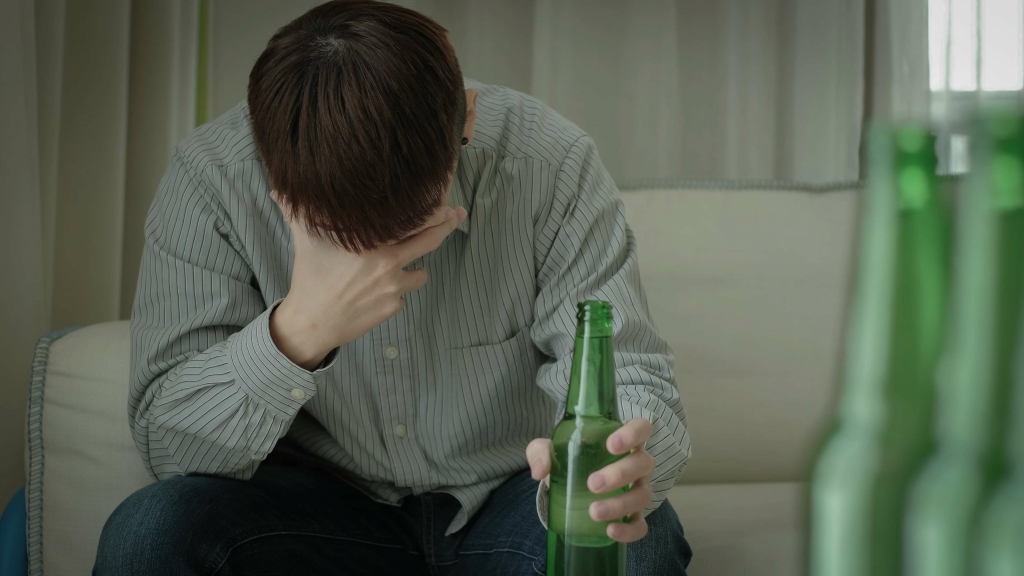The 4 Stages of Drug Addiction: Breaking the Cycle
Despite these mounting problems, the addicted individual often continues to use. This is one of the hallmarks of addiction – the continued use of a substance despite clear negative consequences. It’s a stage where the progression of substance use disorders becomes painfully clear, and the need for professional intervention becomes crucial. Mental health issues, trauma, or chronic stress can also play a role in pushing someone towards that first experience. Maybe it’s a joint passed around at a party, a pill offered by a friend, or a drink to take the edge off a stressful day. Whatever the substance, the first stage of addiction is marked by experimentation and initial use.
- At Prairie Recovery Center Center, we offer a comprehensive approach to addiction treatment.
- Addiction isn’t just a matter of weak willpower or moral failing – it’s a complex interplay of brain chemistry, neural pathways, and learned behaviors.
- Experiencing 2-3 specific symptoms is classified as a mild substance use disorder, establishing a framework for understanding varying degrees of this mental health condition.
- Substance use may become a habit used to manage emotions or stress, often called self-medicating.
Crisis and Treatment
There are various models for the addiction cycle that include different stages. However, the 4 stages of addiction generally cover experimentation, regular use, abuse, and addiction to describe the progression of first use to substance use disorder. Once addiction starts, however, it’s more difficult to interrupt the cycle.
Therapeutic Interventions
Relapse is defined to have occurred regardless of whether the addict attempted to stop the drug themselves before seeking treatment or enrolling in a treatment center. At this stage, the addict’s health, financial status, and social life have been severely affected by their addiction. Another way to heal from dependency on the source of your addiction is to reach a state of acceptance. According to Codependent No More by Melody Beattie, acceptance means understanding and working with reality. Accepting reality is the only way to change your situation, and the only way to reach acceptance is to grieve. We can compare the act of accepting addiction to the five stages of grief.
Holistic Treatment for Drug Addiction at The Dawn Rehab Thailand
Breaking free from this stage typically requires a combination of detoxification, therapy, and ongoing support to rebuild and maintain sobriety. Addiction is a complex and progressive condition that affects individuals physically, mentally, and emotionally. It develops gradually, often taking over a person’s life before they realize the extent of the problem, with alcohol addiction being a significant issue many face. Understanding the stages of addiction is essential for identifying early warning signs and encouraging timely intervention.
- Understanding what to look for can make all the difference in getting timely, effective help.
- The abuse stage marks a critical turning point in the addiction cycle.
- If you or a loved one is struggling with substance use disorder, take the first step today by seeking professional guidance.
- Start your journey toward recovery at Sequoia Behavioral Health, and contact us today for a free consultation.
The Cycle of Addiction: The 4 Stages, Explained
Cravings become overwhelming, and individuals lose control over their ability to moderate or stop their use. This lack of control persists even when they are fully aware of the harmful consequences, such as damaged relationships, health issues, or legal problems. Dependency often isolates individuals, as their world increasingly revolves around substance use. Identifying these symptoms is critical for initiating comprehensive treatment.
Programs such as Alcoholics Anonymous (AA) and other peer support groups are essential, providing a sense of community and shared experience. Continued engagement in these networks helps maintain accountability and offers individuals a safe space to discuss their challenges. As we conclude our journey through the addiction timeline, it’s important to reflect on the key takeaways. Addiction is a progressive disorder that develops over time, often starting with innocent experimentation and potentially leading to a life-threatening condition. Understanding this progression is crucial for early intervention and effective treatment. The transition from regular use to dependence and addiction is often a gradual process, but its effects are profound and far-reaching.

Stage 4: Addiction and Dependency – Complete Loss of Control
Instead, addiction is a process that occurs over a long period of time and is often aided by several different circumstances. Stage two of the stages of addiction represents somewhat of a fork in the road for a lot of people. While it is true that some people will be able to engage in the regular use of drugs without developing a dependence, the risk for substance abuse greatly increases during this stage. With regular use also comes a subsequent increase in the likelihood of participating in high-risk behaviours like driving while under the influence, emotional volatility, or depression. A person might drink at parties, take prescription painkillers for an injury, or try recreational drugs in a social setting. While experimentation does not always lead to addiction, it increases the risk—especially for those with a family history of substance abuse or underlying mental health conditions.
What are the overall goals of rehabilitation?
It supports your recovery after you leave more intensive treatment, like residential rehab. http://www.ramadapittmeadowsreviews.ca/index.php/opioid-symptoms-and-warning-signs/ Aftercare can include sober living, ongoing therapy sessions, and continued contact with staff from your treatment center. Many rehabs also have strong alumni communities with events, 12-Step groups, and more to keep patients connected and supported long after they leave treatment. For individuals in the first two stages of initial use and abuse, outpatient treatment and behavioral health counseling may be all that’s needed to get back on track. Later stages, like stages 3 and 4, may require more involved treatment.
Stage Two: Regular Use
This type is more prone to risky behaviors and co-occurring substance use disorders. As substance use continues, the body adapts, leading to tolerance—a need for higher doses to achieve the same effect. At this stage, individuals may experience physical dependence, meaning they rely on the substance to function properly. Withdrawal symptoms, such as headaches, irritability, or nausea, occur if the substance is not used, reinforcing the cycle of substance choose the correct cycle of addiction use. Psychological dependence also develops, with the individual feeling compelled to use the substance to cope with stress, manage pain, or address emotional distress. Three of the most common relapse prevention strategies have included therapy and skill development, medications, and monitoring.

To truly understand addiction, we need to peek under the hood and examine what’s happening in the brain. Addiction isn’t just a matter of weak willpower or moral failing – it’s a complex interplay of brain chemistry, neural pathways, and learned behaviors. Brittany has 15 years of experience in the Mental Health and Substance Abuse field. Breaking the addiction cycle alcohol rehab requires awareness, support, and professional intervention.
The biological need for the drug combined with the psychological craving easily paves the way for addiction and full dependency to take over during Stage 4. Although it might not necessarily lead to full-blown addiction, drug experimentation is in fact considered the first stage of the 4 stages of addiction. Particularly among young people, experimentation is often accepted or even encouraged, but it is important to remember that experimentation isn’t always harmless. Particularly if teens exhibit certain risk factors for addiction, experimentation can be an easy pathway to a long future of substance use disorders. Common signs of addiction include changes in behavior, neglecting responsibilities, an increase in tolerance, withdrawal symptoms, and continued use despite negative consequences.
They may begin to attend counseling sessions, join support groups, or seek out other forms of help. The individual may also start to make changes in their lifestyle, such as changing their diet or exercising more. These are holistic programs that can additionally address possible co-existing disorders such as alcohol abuse alcohol addiction, and mental illness. They can even help you get a proper diagnosis for health issues or assist you in creating a strong support network.